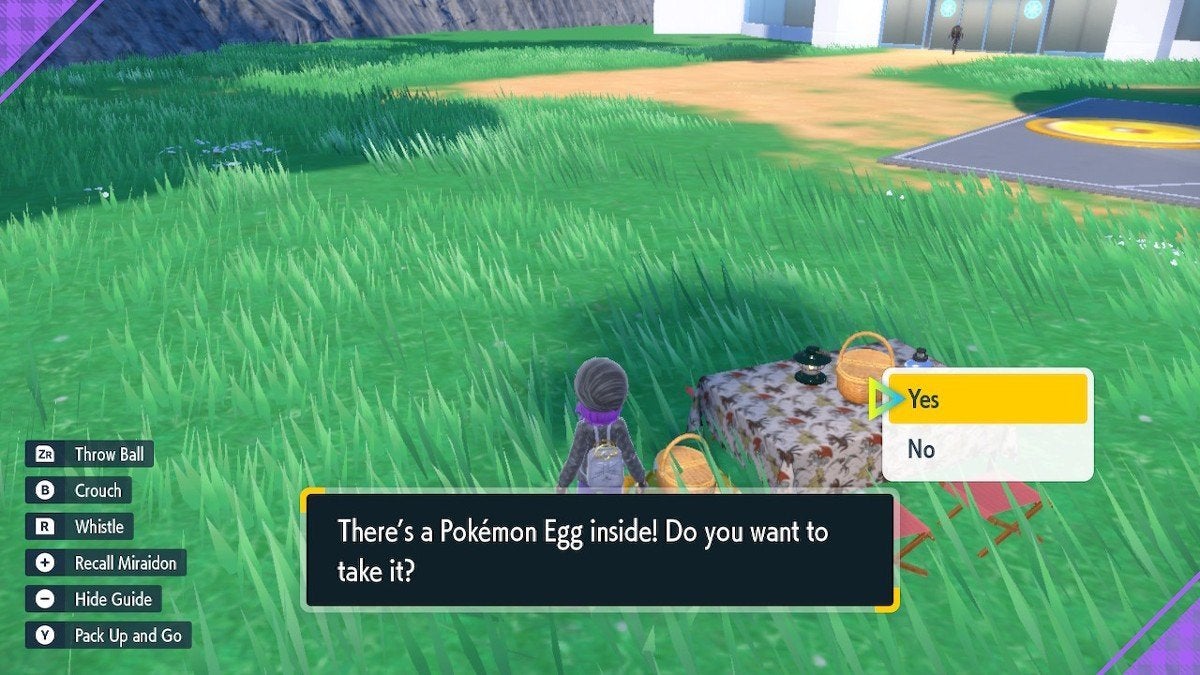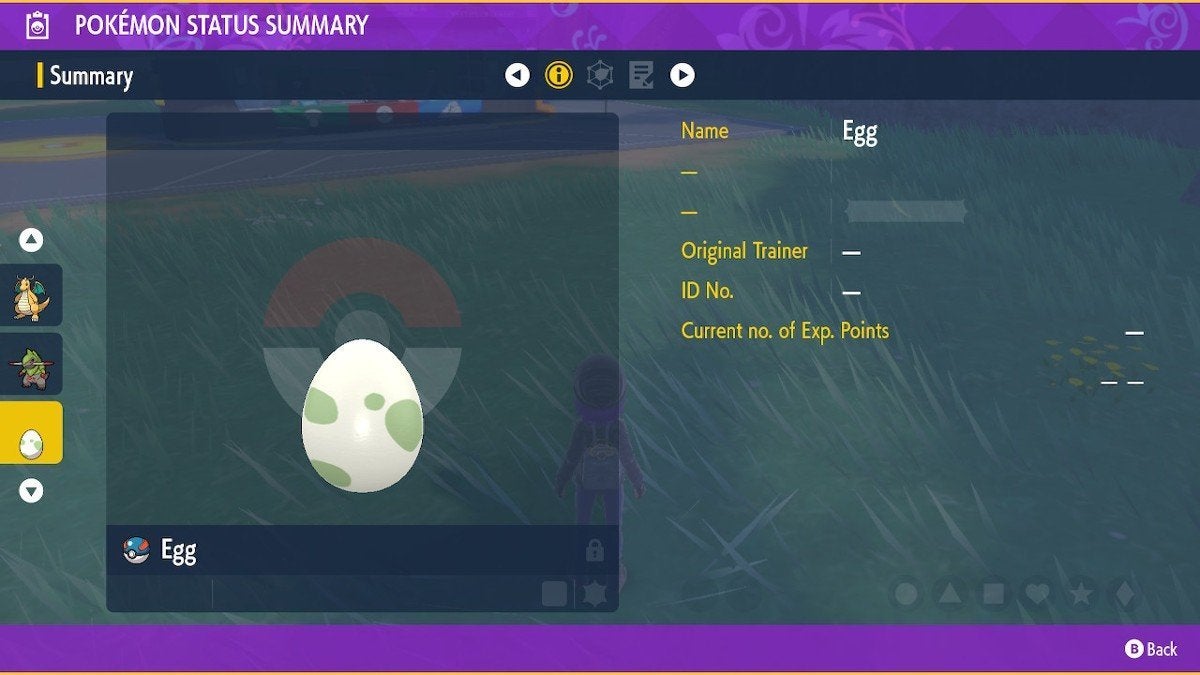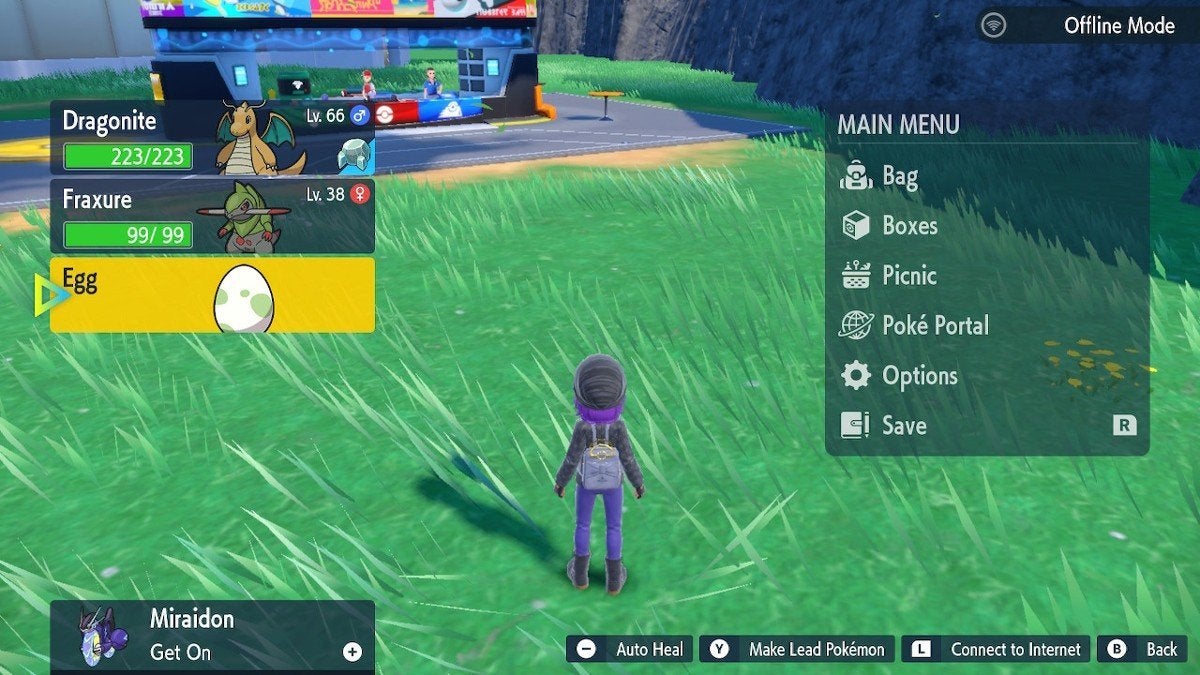![]() Key Takeaway
Key Takeaway
To breed Pokémon in Pokémon Scarlet & Violet, you need to have a picnic while you have two compatible Pokémon in your party. When you do, you can find the egg they make in the basket at the foot of your picnic table.
In a big change from the usual way to get Pokémon Eggs, you now need to perform different steps. In Pokémon Scarlet & Violet, how to breed your Pokémon depends on your party and a new mechanic.
Table Of Contents
What You Need to Do to Get Pokémon Eggs

The first step is to get two Pokémon that can breed together in your party. To simplify things, you can put all of your Pokémon besides the breeding pair into a storage box.
For the most part, it’s easiest to either breed two different-gendered Pokémon of the same species or to breed one Pokémon with a Ditto. The latter method is always more straightforward. With that said, you can still breed Pokémon of different species as long as they are in the same Egg Group.
Afterward, you need to have a picnic. When you have a picnic with two compatible Pokémon, a Pokémon Egg will appear in the basket at the foot of your picnic table. When you pick up the egg, it will go straight into a storage box—even if you have open slots in your party.
This may take a few minutes, so, in the meantime, wash your Pokémon, talk to them, and maybe even make a sandwich. If you pack up your picnic, you will reset the timer for egg creation—don’t do this if you want an egg!
What’s the Point of Breeding Pokémon?

There are a few different reasons for you to breed your Pokémon. The two most dominant reasons are to get a pocket monster with an ideal Nature and to allow offspring Pokémon to inherit moves that they cannot otherwise learn.
Breeding for Natures
A Pokémon’s Nature determines how some of its stats will increase as it gains levels. Depending on what you intend to use a Pokémon for, its Nature can be good or bad.
For example, if a Pokémon that you intend to use as a physical attacker has a Nature that decreases how much its Attack stat grows, this would be a bad Nature for that Pokémon to have.
If the two parent Pokémon are not holding any items, or are holding any items besides Everstones, there is only a small chance that they will pass down one of their Natures to their offspring. This allows for the baby Pokémon to potentially get a different Nature than their parents.
However, a parent holding an Everstone is guaranteed to pass down its Nature to its offspring. If both parents are holding Everstones, each of them has an equal chance of passing down their Nature.
On a related note, starting from Generation VIII, there are now items that can change a Pokémon’s Nature. These items are called Mints and come in many varieties. Although, Mints are pretty expensive ($20,000 each), therefore it’s more cost-efficient to breed for Natures instead of buying them from Chansey Supply stores.
Here is a list of all 25 Natures and what they do:
| Nature Name | Increased Stat | Decreased Stat |
|---|---|---|
| Hardy | None | None |
| Docile | None | None |
| Serious | None | None |
| Bashful | None | None |
| Quirky | None | None |
| Lonely | Attack | Defense |
| Brave | Attack | Speed |
| Adamant | Attack | Special Attack |
| Naughty | Attack | Special Defense |
| Bold | Defense | Attack |
| Relaxed | Defense | Speed |
| Impish | Defense | Special Attack |
| Lax | Defense | Special Defense |
| Timid | Speed | Attack |
| Hasty | Speed | Defense |
| Jolly | Speed | Special Attack |
| Naive | Speed | Special Defense |
| Modest | Special Attack | Attack |
| Mild | Special Attack | Defense |
| Quiet | Special Attack | Speed |
| Rash | Special Attack | Special Defense |
| Calm | Special Defense | Attack |
| Gentle | Special Defense | Defense |
| Sassy | Special Defense | Speed |
| Careful | Special Defense | Special Attack |
Breeding for Egg Moves
Some Pokémon can only learn certain moves by inheriting them from their parents. These are called Egg Moves.
There is some priority in which moves are passed down from parent to offspring. Egg Moves are near the top of this priority list. Therefore, a baby will be more likely to inherit Egg Moves instead of other moves.
Let’s go through Egg Move breeding by looking at a specific example. Pretend that you want an Azurill with Belly Drum, but you do not have an Azumarill that knows this move. Azurill cannot learn Belly Drum aside from inheriting it as an Egg Move. This means that you need at least one parent that knows Belly Drum.
The baby Pokémon will always be the same species as its mother unless you breed using a Ditto. For this example, Ditto is not viable, as you need both an Azumarill (or Marill) and a Pokémon that knows Belly Drum.
So, if you want an Azurill, you need a female Azumarill and a male parent. The Poliwag line can learn Belly Drum through leveling up. A male Poliwag (or one of its evolutions) that knows Belly Drum is a good choice (or it would be, as the Poliwag line is not in Generation IX).
Most importantly, the Poliwag line and the Azurill line are both in the same Egg Group: Water 1. As such, these Pokémon are compatible for breeding.
Put a female Azumarill and a male Poliwag that knows Belly Drum in your party. Then, begin a picnic. Next, check the basket at the foot of your picnic table for a Pokémon Egg.
This egg will hatch into an Azurill with Belly Drum. You must walk around for a while with the egg in your party before it will hatch.


